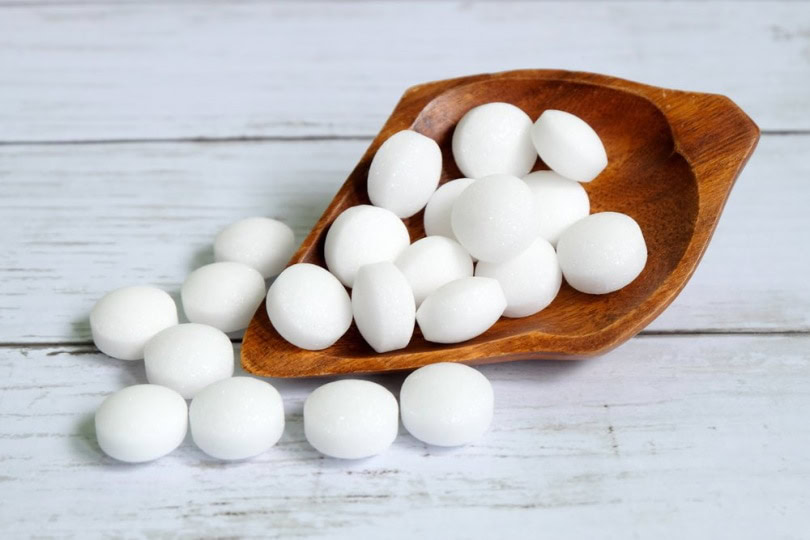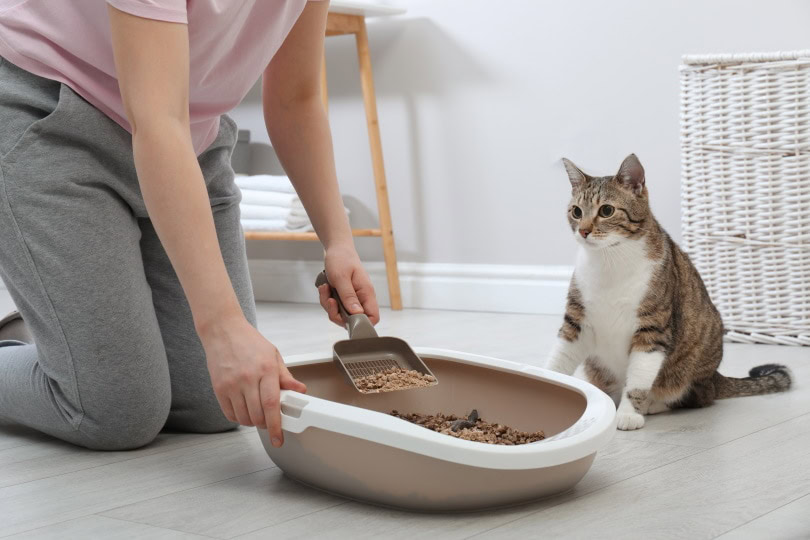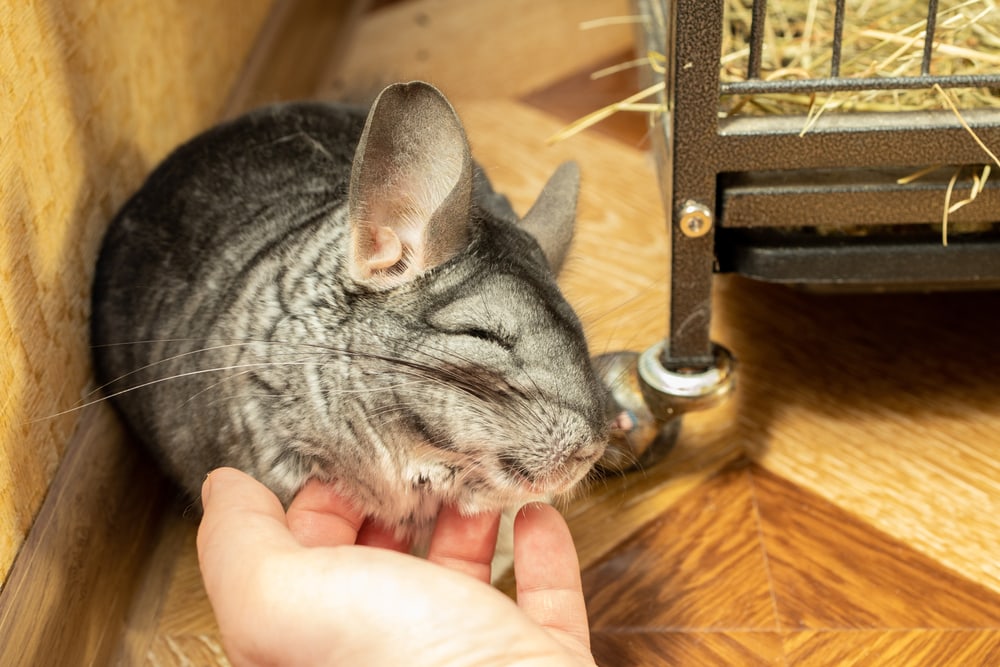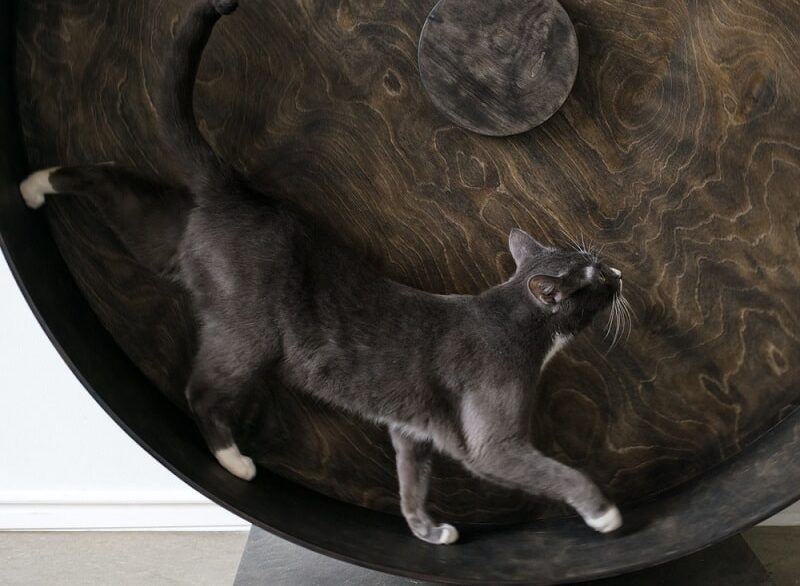VET APPROVED

The information is current and up-to-date in accordance with the latest veterinarian research.
Learn more »Click to Skip Ahead
As cuddly as they are while indoors, cats are a massive outdoor nuisance when they provoke pets, spread disease, or use backyards and gardens as their potties and playpens. Given their agility, many frustrated homeowners rely on scent-based deterrents to keep feral felines away. Mothballs contain either naphthalene, paradichlorobenzene (PDB), or camphor. Exposure to them through skin, ingestion, or inhalation can lead to toxicity. Therefore, mothballs are not a safe way to deter cats.
The toxicity among different types of mothballs can vary, but they are all dangerous. Let’s explore why you can’t use mothballs to keep cats away and the implications for you, your pets, and the local wildlife.

Can I Keep Cats Away With Mothballs?
Mothballs are solid pesticide products that slowly emit chemical vapors to kill insects. Most products use either naphthalene, from coal tar or crude oil, or paradichlorobenzene (PDB), a chlorinated aromatic hydrocarbon.
Mothballs are not designed for anything other than clothes moths. While they will repel some cats, others may become more curious and investigate the smell. Being close enough to inhale the chemical vapors is harmful enough for cats, but mothballs are also a danger if the cat ingests them.
Many people use mothballs for DIY pest control against rats, snakes, and squirrels, but although some may have certain levels of success, you should never apply mothballs to repel anything beyond what the label states, including cats. And using mothballs solely for moth control in sealed environments is more than a recommendation; it’s a federal law.
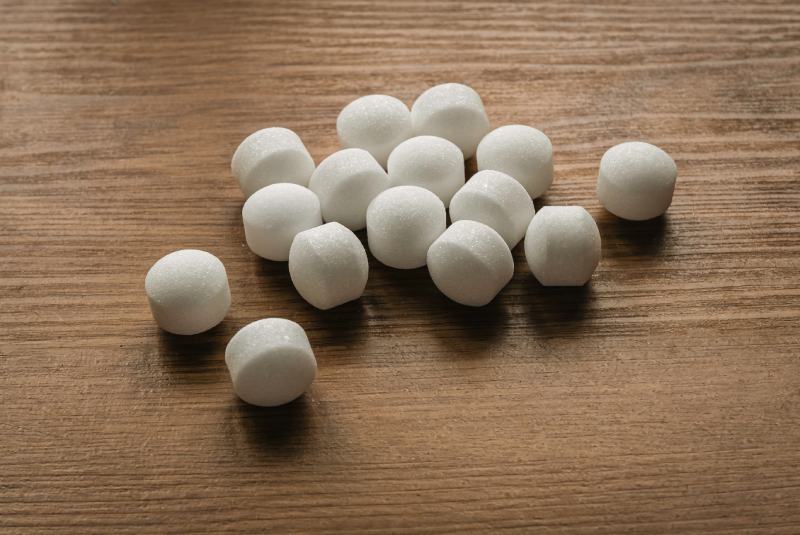
Hazards of Mothballs
Mothballs can be hazardous to people, pets, algae, and wildlife. Children and pets may mistake the round balls for candies or treats and ingest them, causing toxicity. The vapors also pose a risk, and hemolytic anemia, diarrhea, fever, abdominal pain, and painful urination with discolored urine have been reported in humans.
Naphthalene mothballs are more toxic than PDB mothballs. Even one mothball can result in life-threatening toxicity in children. In either case, exposure can cause a variety of hematological, gastrointestinal, renal, and neurological symptoms, including:
- Hemolytic anemia
- Acute kidney injury
- Nausea
- Vomiting
- Diarrhea
- Fever
- Fatigue
- Dizziness
- Hallucinations
- Headaches
- Seizures
In severe cases, ingestion can lead to seizures or coma. Acute kidney damage may occur. Naphthalene can cause hemolytic anemia, a condition in which the breakdown of red blood cells inhibits oxygen from traveling through the body.
Mothball Hazards to Cats
Dogs and cats are no less susceptible than children to adverse health effects from mothballs. No matter the type, pets typically experience the following signs from ingestion:
- Vomiting
- Drooling
- Tremors
- Skin irritation
- Kidney damage
- Anemia
- Fast breathing
- Anorexia
- Lethargy
- Diarrhea
- Abdominal pain
Liver and kidney changes can also occur, as can hemolytic anemia, particularly from naphthalene mothballs. Contacting a vet or pet poison helpline is critical if a cat has been exposed to a mothball. Depending on your cat’s signs, your vet may induce vomiting, give activated charcoal, bathe the area, or perform gastric lavage. Activated charcoal can be given to minimize adsorption of the toxics in mothballs.
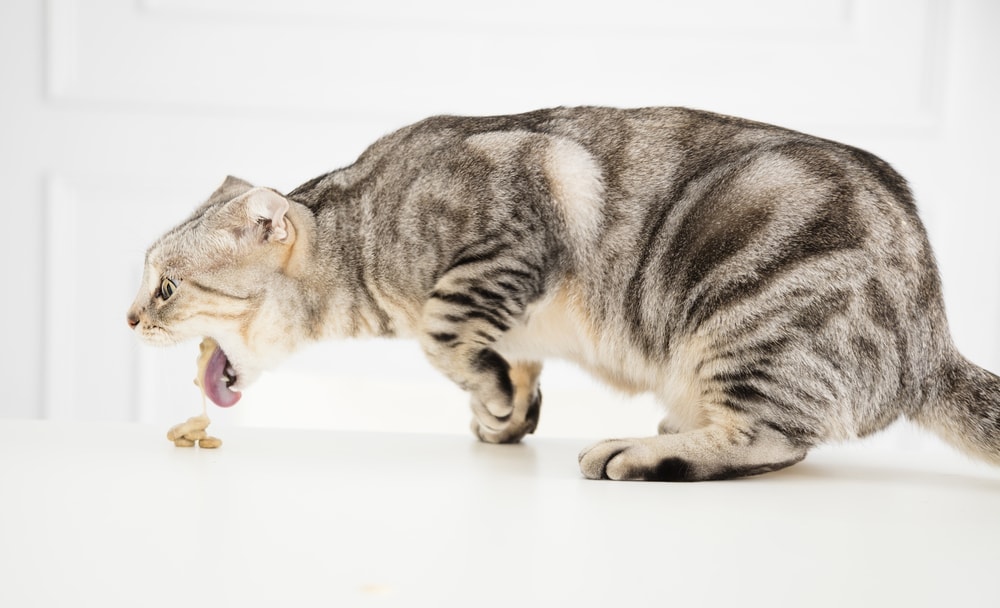
Environmental Hazards
Naphthalene and PDB can enter groundwater, soil, and local water sources. Though it typically breaks down quickly from microbial decomposition, it can bind with soil and affect nearby plant life. It generally has less than a day-long half-life in air, but that jumps to 80+ days when it’s in soil. Aquatic specimens may experience moderately toxic effects.
PDB, while less toxic, hangs around in the environment for much longer than naphthalene. Its half-life is approximately 31 days in the atmosphere. Though both mothball types are unlikely to cause significant harm if you use them for home mothball control, they aren’t ideal to keep around desirable plants. At the same time, you don’t want wildlife to ingest mothballs by accident and fall ill or die.
How Can I Keep Cats Away?
Mothballs are out of the question, but that doesn’t mean there aren’t plenty of non-toxic DIY cat repellents that can yield positive results. The following are some of the most accessible and easy-to-use options:
- Double-stick tape
- Chicken wire mesh
- Loud noises
- Motion-detection water sprinkler
Applying these deterrents around targeted cat hotspots, perimeters, and perches can help keep cats away.
Instead of using a temporary deterrent, you can use motion-activated devices for hands-free cat repellency. Sprinklers are beneficial options, magnifying the classic spray bottle approach to dissuading a misbehaving cat. Ultrasonic devices have also shown substantial effectiveness in separate studies, one showing a 32% decrease in activity during an experiment and another showing a 46% reduction in incursions.
You can also install physical deterrents like skat mats. They have blunt rubber spikes that do not harm felines but make sitting on a windowsill or garden area uncomfortable.
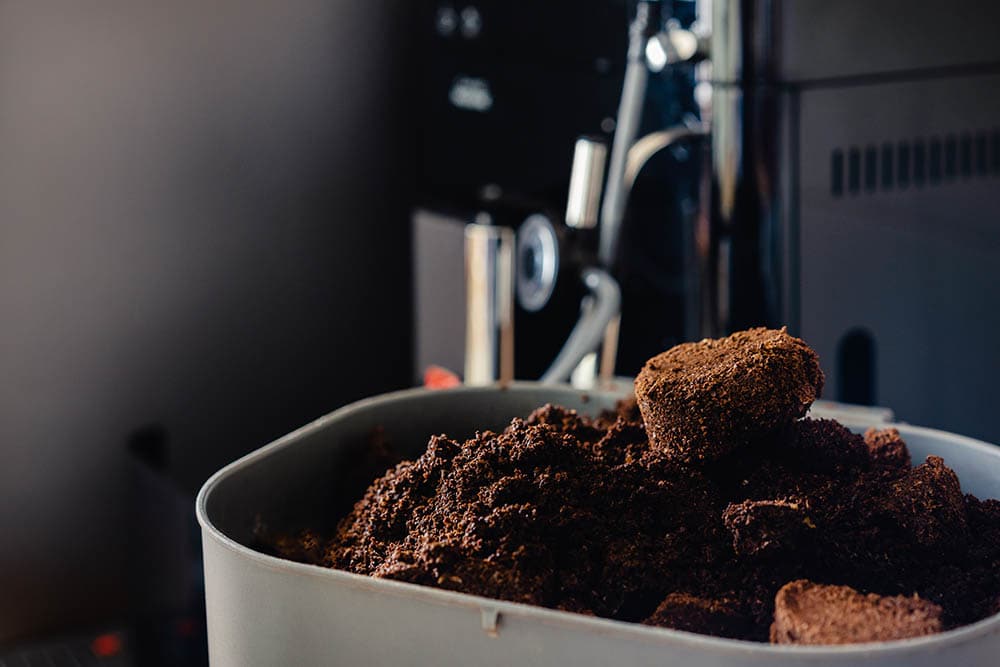

Conclusion
Mothballs aren’t a safe solution for keeping cats away, nor any furry pest, for that matter. Mothballs are highly toxic, whether ingested, inhaled, or by contact, making them an all-around impractical consideration. Instead, work with your neighbors and employ any of the several convenient and safer options to keep stray and feral cats from wreaking havoc on your property.
Featured Image Credit: Faizal Ramli, Shutterstock
